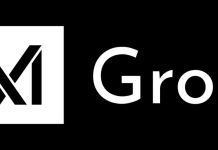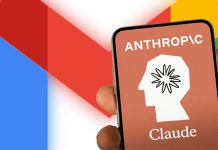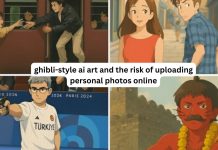Table of Contents
In a groundbreaking move that is set to redefine the way we create and consume visual content, OpenAI has introduced Sora, its state-of-the-art text-to-video AI generator. Designed for ChatGPT Plus and Pro users, Sora promises to make video creation as simple as typing a text prompt. This innovative tool has sparked excitement across creative and professional communities, as it brings advanced video generation capabilities to a broader audience. But what exactly is Sora, and how can it change the world of content creation?
What is Sora?
Sora is a revolutionary AI tool by OpenAI that allows users to create videos from text inputs. Unlike traditional video editing software that requires extensive technical skills and hours of effort, Sora simplifies the process to a few clicks. Users can generate dynamic, visually appealing videos tailored to their needs by entering a descriptive text prompt. Whether for storytelling, marketing, education, or entertainment, Sora makes video creation accessible to everyone.
Available exclusively to ChatGPT Plus and Pro subscribers, Sora harnesses the power of cutting-edge AI algorithms to produce high-quality videos in minutes. It caters to a wide range of users, from amateur creators to seasoned professionals, enabling them to translate their ideas into compelling visual content effortlessly.
How Does Sora Work?
Using Sora is remarkably straightforward. Users begin by providing a detailed text description of the video they want to create. For instance, a user might type, “A sunset over a serene lake with birds flying in the distance.” Sora’s advanced AI engine then processes the text input and generates a video that matches the description. The system is designed to interpret the nuances of the input, ensuring that the final output is visually accurate and contextually meaningful.
The tool also allows users to make adjustments to the generated videos. This feature ensures flexibility, enabling creators to refine their videos until they align perfectly with their vision. Sora’s intuitive interface and powerful AI technology make it an ideal tool for anyone looking to produce professional-grade videos without the steep learning curve of traditional software.
Key Features of Sora
- Ease of Use: Sora’s simple text-to-video approach eliminates the need for technical expertise, making it accessible to beginners and experts alike.
- Customization Options: Users can fine-tune their videos by tweaking colors, animations, and other visual elements to suit their preferences.
- High-Quality Output: Despite its simplicity, Sora delivers videos that are polished, professional, and ready for use in various contexts.
- Speed and Efficiency: Traditional video creation can take hours or even days. With Sora, users can generate videos in a fraction of the time.
- Versatility: From social media campaigns to educational tutorials, Sora can be used for various applications.
Why is Sora a Game-Changer?
Sora stands out because it democratizes video production. Previously, creating high-quality videos required expensive software, professional equipment, and a skilled editor. Sora breaks down these barriers, allowing anyone with a creative idea to produce videos quickly and affordably. This has profound implications for:
- Content Creators: YouTubers, influencers, and vloggers can now produce engaging videos with minimal effort.
- Businesses: Small and medium enterprises can create promotional videos without investing heavily in marketing budgets.
- Educators: Teachers and trainers can generate instructional videos that enhance learning experiences.
- Nonprofits: Organizations can create impactful storytelling videos to raise awareness and support their causes.
Potential Challenges and Limitations
While Sora is undeniably revolutionary, it does come with some limitations. For instance:
- Creativity Constraints: AI-generated videos are based on pre-trained models and may not fully capture highly unique or abstract ideas.
- Subscription Requirement: Access to Sora is limited to ChatGPT Plus and Pro users, which may exclude some potential users.
- Ethical Concerns: As with any AI tool, there are concerns about misuse, such as generating misleading or harmful content.
- Learning Curve: Although Sora is easy to use, users may still need time to understand how to craft effective prompts for optimal results.
OpenAI has acknowledged these challenges and is actively working to address them. The company is committed to ensuring that Sora is used responsibly and continues to improve its capabilities.
The Future of AI in Content Creation
Sora is just the beginning of a larger trend where AI transforms the creative landscape. In the future, we can expect AI tools like Sora to become even more sophisticated, offering greater customization, improved realism, and broader accessibility. The integration of AI into content creation will empower individuals and organizations to innovate and communicate like never before.
Moreover, the potential applications of AI-driven video generation extend beyond entertainment and marketing. Industries such as healthcare, real estate, and e-commerce can leverage these tools to provide immersive experiences for their audiences. For example, a real estate agency could use Sora to create virtual property tours, while an e-commerce platform might generate product demonstrations on the fly.
Conclusion
OpenAI’s Sora marks a significant milestone in the evolution of AI technology. By making video creation as simple as typing a text description, Sora opens up new possibilities for creativity and expression. Whether you’re a content creator, a business owner, or an educator, Sora offers an unprecedented opportunity to bring your ideas to life.
As technology continues to advance, tools like Sora will play a pivotal role in shaping the future of content creation. By empowering users to produce high-quality videos effortlessly, Sora is not just a tool but a catalyst for innovation and creativity in the digital age. The launch of Sora is a clear reminder that the future of storytelling is here, and it’s more accessible than ever before.





































![[SOLVED] – Cpanel Stucked as GRUB after reboot](https://www.zolute.net/wp-content/uploads/2019/01/cpanel-deprecated-mysql-error-100x70.jpg)